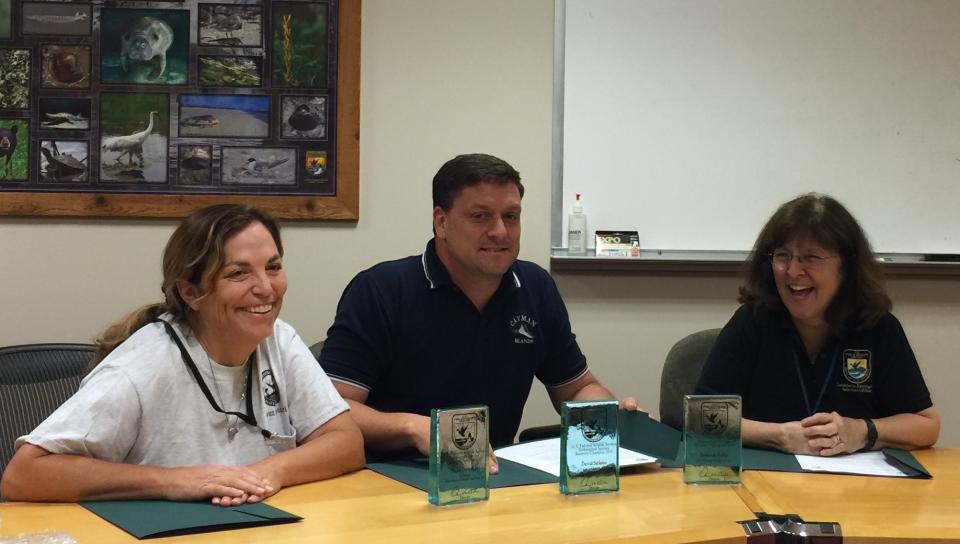
Maria Davidson, Large Carnivore Program Manager for the Louisiana Department of Wildlife and Fisheries (LDWF), has been recognized by the U.S. Fish and Wildlife Service (USFWS) for her work in the recovery of the Louisiana Black Bear.
Davidson, along with Deborah Fuller and David Soileau of USFWS, have been named 2015 Recovery Champions for the USFWS’s Region 4. The trio earned the distinction because of their efforts in restoring the species and having it removed from the Endangered Species list in April of this year.
“The Louisiana Black Bear Recovery Team is recognized for their contributions to the recovery of the Louisiana black bear and the conservation of the habitat on which the species depends,’’ the USFWS said. “Their long history of working in partnership with federal, state, academic, non-governmental organizations, private landowners and the public to ensure long-term population viability have proven invaluable to the recovery of this species.
“The recovery team worked to manage human-bear conflict, organized educational programs for the public and restored the subspecies to unoccupied portions of its historical range, thus contributing to population connectivity and the establishment of a new breeding population. These efforts improved the bear’s status and ultimately led to its removal from federal protection in April 2016.’’
Davidson began working at LDWF in 1996 doing habitat permitting work. In her first year at the agency, she began working in the bear program, then as the program manager for the past 15 years she has been a key cog in the recovery process for LDWF. The Louisiana black bear was listed as a threatened species under the Endangered Species Act (ESA) in 1992.
“When I started, we only had bears in three isolated populations,’’ Davidson said. “So knowing how much the population has grown and expanded its range during the recovery period of management is really special. That’s huge to me. I know the actions we have taken as a department with our partners in conservation have been key to the relatively rapid recovery of our Louisiana black bear.”
When the Louisiana black bear was listed under the ESA due to habitat loss, reduced quality of remaining habitat and human-related mortality, the three known breeding subpopulations were confined to the bottomland hardwood forests of Louisiana in the Tensas, and Upper and Lower Atchafalaya River basins. Those original subpopulations have all increased in number and have stable to increasing growth rates. Additional breeding subpopulations have developed in Louisiana and Mississippi, providing a healthier, long-term outlook for the subspecies.
“The tireless work by Maria and our wildlife staff has contributed significantly to the recovery process of the Louisiana black bear,’’ LDWF Secretary Charlie Melancon said. “They are involved in every facet, from waking up in the middle of the night to take bear calls, to countless hours in the field tagging and taking DNA samples, to educating the public on coexisting with bears. I’d like to congratulate them on this much-deserved accolade.’’
